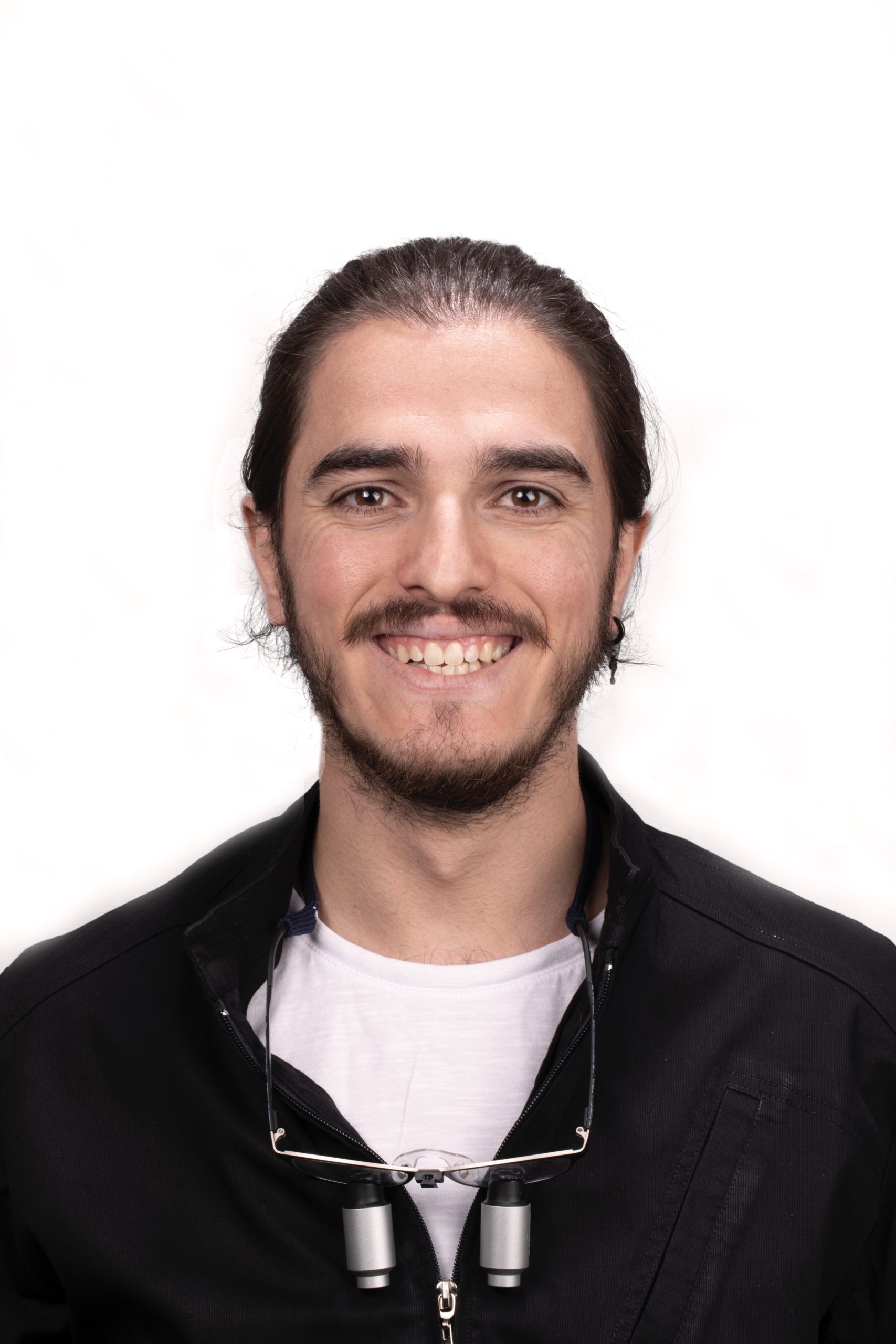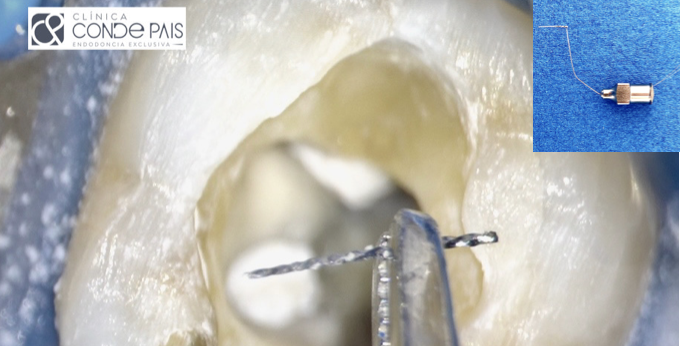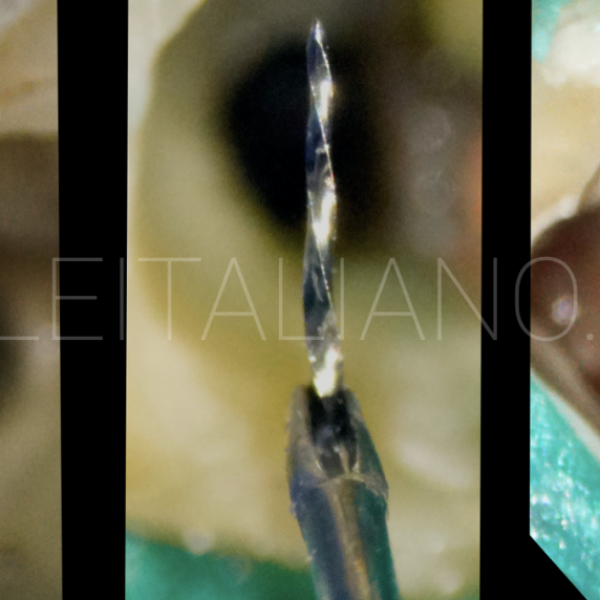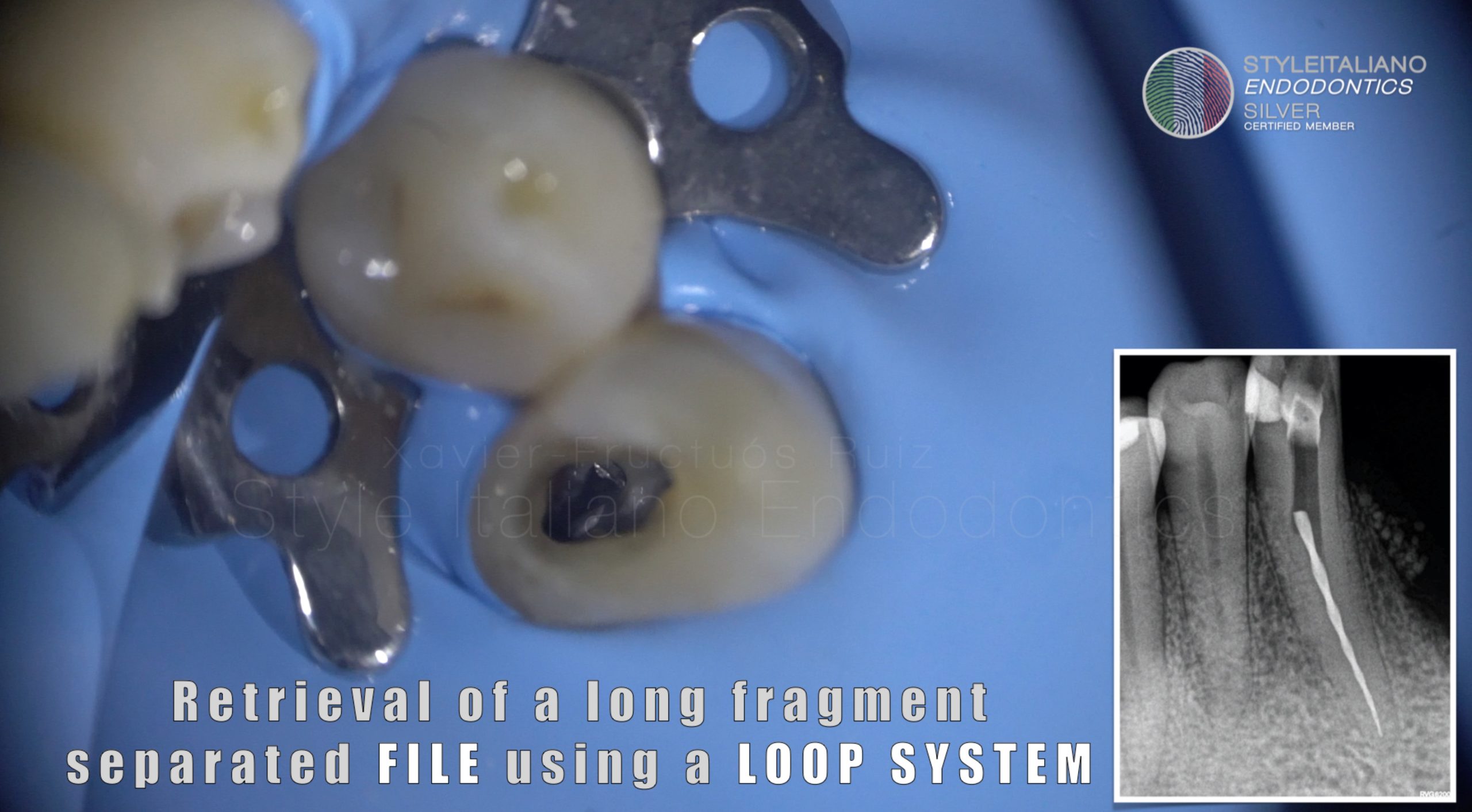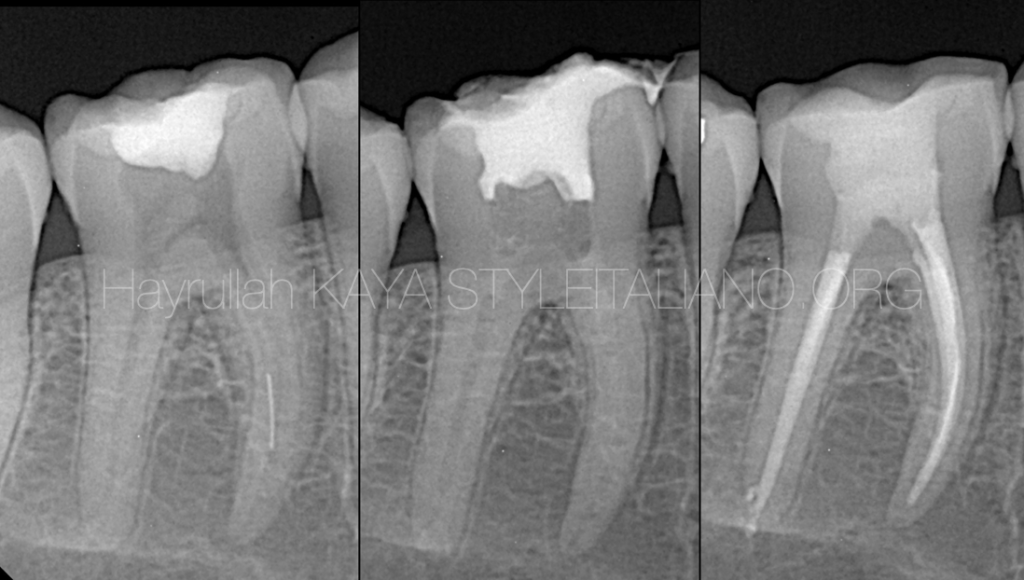
Custom loop: Removing broken root canal instruments
26/02/2024
Hayrullah Kaya
Warning: Undefined variable $post in /var/www/vhosts/styleitaliano-endodontics.org/endodontics.styleitaliano.org/wp-content/plugins/oxygen/component-framework/components/classes/code-block.class.php(133) : eval()'d code on line 2
Warning: Attempt to read property "ID" on null in /var/www/vhosts/styleitaliano-endodontics.org/endodontics.styleitaliano.org/wp-content/plugins/oxygen/component-framework/components/classes/code-block.class.php(133) : eval()'d code on line 2
Fracture of root canal instruments during endodontic procedure is a common complication due to various factors, including anatomical complexities, procedural errors, and instrument fatigue. Retrieving these fragments is essential to prevent potential complications such as infection and compromised treatment outcomes. When we aim to remove these broken root canal instruments from the root canals, various instruments can be used.
CBCT: By showing the position of the broken root canal instrument and the curvature of the root, this allows the procedure to be more predictable.
DOM (Dental Operating Microscope): Operating within a small space like a root canal becomes more detailed and controlled with a dental operating microscope.
Ultrasonic tips: It has many areas of application.Some of its applications include moving broken instruments within the canal, creating space around the broken root canal instrument using a loop to hold it, and in some cases, directly removing the broken root canal instrument.
Loop: Broken root canal instruments can sometimes be tightly lodged within the root canals. Ultrasonic tips alone might not be sufficient to remove these instruments. Sometimes ultrasonic tips might break into smaller pieces of broken instrument. The Loop technique allows us to grasp the instrument and remove it from the root canal. There are specialized tools available in the market for this purpose. The use of custom loops offers a reliable and effective technique for retrieving broken instruments. In this article, I will demonstrate how to personally create a custom loop technique that assists in removing broken root canal instruments. I will explain how to create a custom loop in 8 steps.

Fig. 1
The presence of a long-sized broken root canal instrument is clearly observed through an X-ray image. The use of ultrasonic tips for the removal of long-sized broken root canal instruments may carry the risk of instrument fragmentation into smaller segments. Therefore, the initial step involves creating space around the broken root canal instrument using ultrasonic tips. This process aims to provide adequate space around broken instrument for the custom loop to grip the instrument effectively. In this case, the custom loop is used to grasp the broken instrument, enabling its successful removal from the root canal.

Fig. 2
The broken file was removed using a custom loop.
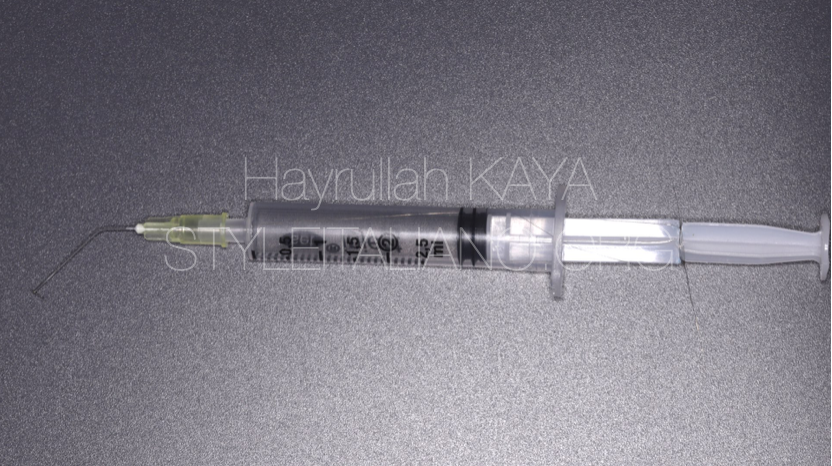
Fig. 3
The broken file was removed using a custom loop.
Creating the ‘custom loop’ for removing of broken root canal instrument with 8 steps
Materials Needed:
Stainless steel wire with a diameter of 0.05 mm
Luer Lock syringe
30 gauge irrigation needle, preferably with an open end
Scalpel handle and scalpel blade
Open the package of the 30 gauge irrigation needle.
Step 1:
If the side of the 30 gauge irrigation needle is perforated, as shown here, you need to first cut this part with scissors to open up the tip.
Step 2:
Place the free ends of the 0.05 mm diameter stainless steel wire, which you have cut to a longer length, into the open-end of the irrigation needle. Using magnification will make this process easier. When you pull the wire from the back of the irrigation needle, a loop will form at the tip of the irrigation needle.
Step 3:
To prevent the formed loop from going inside, you should secure it in place using any suitable method, as shown.
Step 4:
Make sure you choose a Luer Lock syringe. Remove the piston from the Luer Lock syringe. Using a scalpel, create grooves on the piston as shown in the video. Ensure that these grooves are smooth and deep.
Step 5:
Previously we have placed stainless steel wire through the irrigation needle and prevent the formed loop from going inside. Insert the remaining long wire that come out from the back of the irrigation needle into the syringe where we previously removed the piston. Then secure the irrigation needle to the Luer Lock syringe. This creates a more stable structure. Pull the remaining free ends of the stainless steel wire out from the back of the syringe.
Step 6:
Reinsert the piston back into the syringe. However, when doing this, collect the wires in a corner rather than having them in the middle, as shown. Hold the wires stable with your other hand while placing the piston back into the syringe. As you insert the piston, pull it back until the grooves on the piston's handle are revealed.
Step 7:
This step is the most important one. Place the long stainless steel wire pieces that come out from the syringe outside into the grooves on the piston, as shown in the video.
Step 8:
We remove the object that we use to prevent the formed loop from going inside and make the loop free. Now, when you can aspirate the syringe, the loop will gradually tighten. This way, you will be able to catch and pull the broken canal instrument, as shown in the video.
Conclusions
The creation and use of a custom loop offer a valuable approach to managing broken root canal instruments. Unfortunately, specialized equipment for this purpose might not always be available to us.
This article demonstrates the creation of a custom loop for the removal of a broken canal instrument when specialized equipment is not available.
Bibliography
Madarati AA, Hunter MJ, Dummer PM. Management of intracanal separated instruments. J Endod 2013;39:569–81.
Cuj e J, Bargholz C, Hulsmann M. The outcome of retained instrument removal in a specialist practice. Int Endod J 2010;43:545–54.
Gencoglu N, Helvacioglu D. Comparison of the different techniques to remove fractured
endodontic instruments from root canal systems. Eur J Dent 2009;3:90–5.
Ward JR, Parashos P, Messer HH. Evaluation of an ultrasonic technique to remove fractured rotary nickel-titanium endodontic instruments from root canals: clinical cases. J Endod. 2003b;29(11):764–7
Suter B, Lussi A, Sequeira P. Probability of removing fractured instruments from root canals. Int Endod J 2005; 38: 112123.


